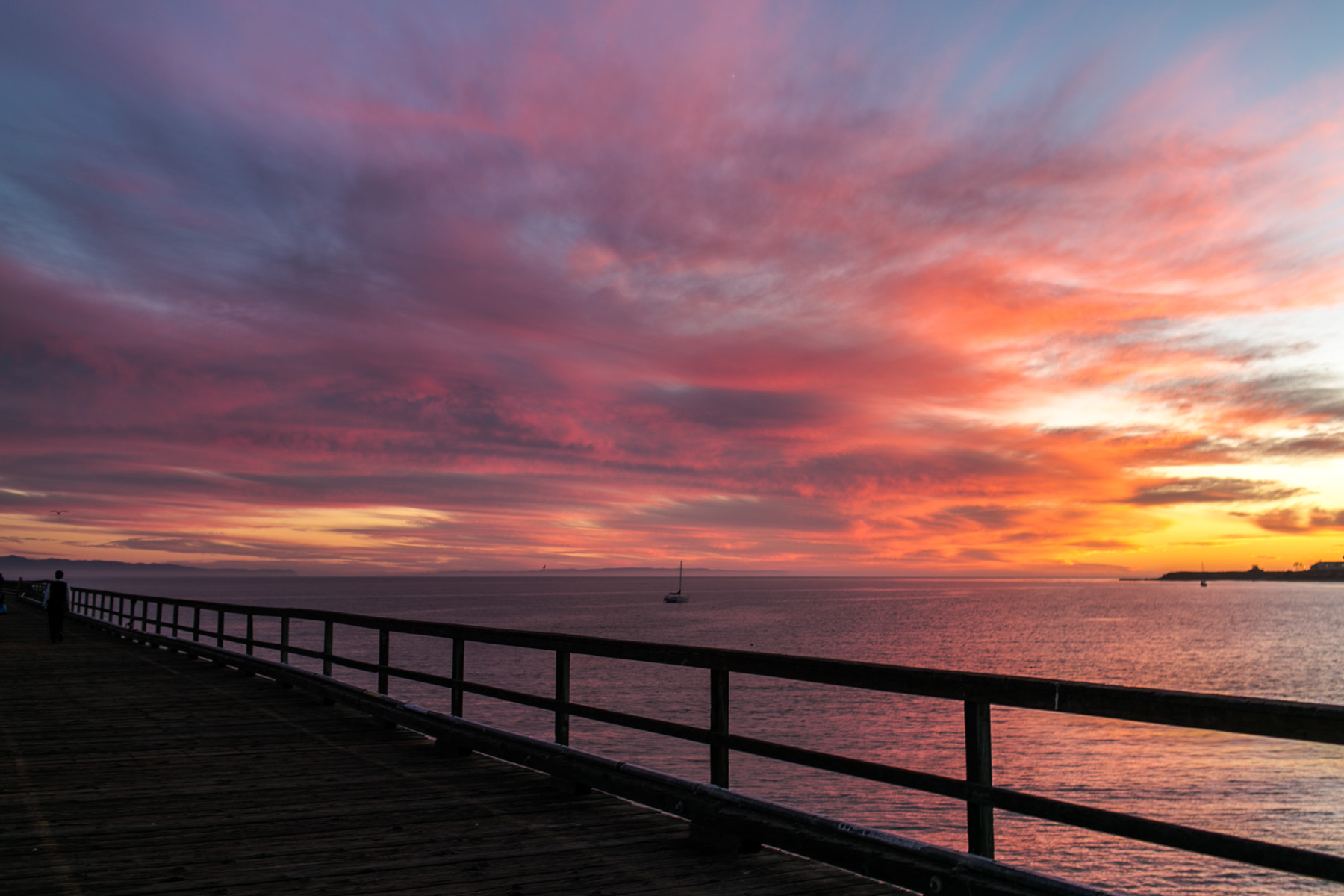What makes a sunset so magical and mesmerizing? SCIENCE.
The sun is our brightest source of illumination by several orders of magnitude, and sunsets are when we, as observers standing in earth’s rotating reference frame, watch it become obscured by the earth as we rotate away.
We’re lucky to have sunsets at all, actually. Mercury only has one sunset every two years, and planets which are tidally locked to their stars have no sunsets at all. Complex features of gravity and orbital mechanics can force one hemisphere to burn endlessly under the sun and plunge the other into permanent darkness. If this were true for earth, no rotation would mean no sunsets (… and the complete destruction of the ecosystem and life as we know it).
The colors we owe to nitrogen and Raleigh scattering. You’ve seen pictures from space where the sun is a point source of white light and the rest of space is black, much like other stars. It’s different on earth because the air molecules interact with photons with wavelengths in the visible spectrum. So even though the sky doesn’t emit light of its own, the molecules redirect photons into your eyes to make the sky appear to glow. The wavelength dependency of Raleigh scattering makes blue and violet photons affected most, which is what redirects mostly blue light into our eyes during the day (our eyes don’t sense violet well). When the sun is setting, light must pass through much more atmosphere, and the additional molecules redirect so much of the blue light away that we’re left to sense the reds and oranges instead.
With more of the direct white light from the sun obscured by atmosphere, diffuse light from the rest of the sky starts to dominate, blurring shadows and softening edges. Strong red light from the side of the sun and the broad blue from above add together to give a warm orange glow. The sun casts shadows which are tinted noticeably blue because the orange light is obscured, leaving the sky to color the penumbras. All these effects come together as the unique lighting conditions of sunset we know as the golden hour.
When the sun is low in the horizon, the angles mean that even short objects begin casting long shadows. Even textures in asphalt and dirt are accentuated. Clouds experience the greatest change in lighting, turning from translucent backlit blobs of vapor during the day to dynamic colorful strokes that decorate the sky at sunset. The temperature difference at the edge day and night can create convection currents that blow clouds around in the sky. Leading edges are brightly lit by the sun. If clouds are high enough, the bottoms of the clouds actually cast shadows on the tops of clouds. Because clouds of different vapor and ice composition aggregate at different altitudes, at certain times the sun can appear to illuminate the high clouds but not the lower clouds.
But why are sunsets special to us? After all, they are relative. Move east several longitudes and sunset shift hours earlier. Depending on the season, moving north can make them earlier or later or even rob you completely of them for a few weeks. It comes down to the human psyche, I think. Our minds are wired to ignore steady states and to notice transitions. The sun beats down on us for an entire day and then leaves us to its distant relatives for the entire night, but in between we watch it slowly sink behind the horizon. We admire the sky at sunset because it is changing to rarer colors. We breathe a sigh of relief because it marks the end of exertion and the start of relaxation. Our memories, the colors, the emotion, the nostalgia, they will be etched into our minds with sunset as their timestamp.
— originally written as a blog submission to my friend Sam Go’s joint blog http://reddygoshoot.tumblr.com/.
